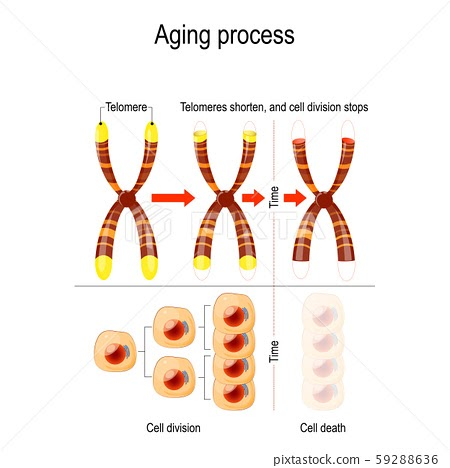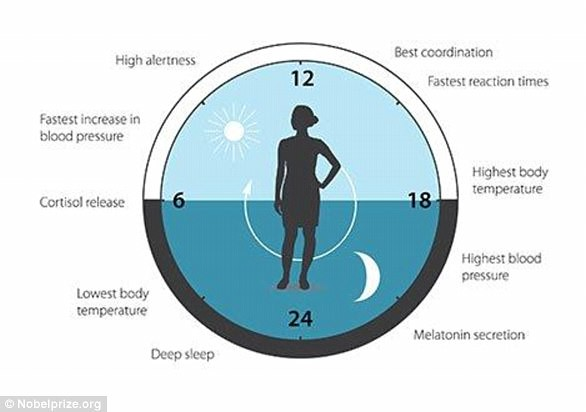HOW TO REVERSE AGE ON CELLULAR LEVEL?
HOW SELF HEALING PREVENTS AGAING?
Since the dawn of time, mankind has sought the cure for death. Age after age, this idea has traveled through different paths of fantasy and insanity, through the fountains of youth and the elixirs of life, through the golden apples and the philosopher’s stones, and all paths have led to their culmination in the books of modern medicine. One cure, however, that still escapes all the collective knowledge of the entire human history, is the cure to the disease known as aging. But that might actually be changing soon…
The basic structural and functional unit of the human body is the microscopic entity called the cell. Every small change that takes place inside it at a micro level, manifests itself at the macro level in the entire body. The body gets healthier as the cells get healthier, and it starts to deteriorate as the cells begin to age.
Vinay Kum describes cellular aging in his book on pathology as “the result of a progressive decline in cellular function and viability caused by genetic abnormalities and the accumulation of cellular and molecular damage due to the effects of exposure to exogenous influences.”
You must be thinking that if it’s the aging of cells that causes the aging of the entire body, then if we can partially or completely stop the cells from aging, can we perhaps prolong our youth or even restore it well into our 50s and 60s? Well maybe. But to get there we must first understand what cellular aging really is. So let’s break it down.
HOW DO CELLS AGE?
Different mechanisms have been described in detail in the medical literature like DNA damage due to inflammatory free radicals, epigenetic changes, shortening of telomeres, deformation of proteins, etc. The effect of diet and nutrition in triggering some metabolic pathways has also been implicated in the process of aging.

DNA DAMAGE
The information for normal structure, function, and division of cells to produce their progeny is encoded in the form of a collection of nucleotide bases called DNA. Aging is directly related to our DNA. Interestingly, certain genes directly regulate aging, and mutations in such genes can result in premature aging, as occurs in Werner’s syndrome.
Remember, any damage to DNA can result in effects on all the components of a cell. A healthy cell is constantly exposed to insults by free radicals which can be produced due to exogenous influence like UV rays or endogenously within the cells.
Endogenous free radicals are produced in mitochondria during the process of oxygen consumption called cellular respiration. Their levels are kept in check by anti-oxidative mechanisms. The efficacy of these mechanisms decreases as the cells age, leading to the accumulation of free radicals which damage the DNA. Since these free radicals originate in the mitochondria, mitochondrial DNA is especially prone to getting injured.
“LIFESTYLE CHANGES IN OUR DIETS AND HABITS, AND EVEN IN THE WAY WE BREATHE CAN SET UP STALWART WALLS OF DEFENSE AGAINST SUCH INSULTS TO OUR DNA AND OUR CELLS, AND THAT IS EXACTLY WHAT WE PRACTICE HERE AT HOLISTICLIVEYOUNGER.”
There exist certain mechanisms in our body that are responsible for DNA repair. With age, the efficacy of these repair mechanisms decreases. This causes the DNA to go through changes at certain points which we call mutations. An aged cell with such mutations can simply lead to cell death, or worse, to cancer
Another mechanism of note is explained by the Antagonistic pleiotropy theory which describes the evolutionary aspect of aging. Pleiotropic genes encode opposing traits. Their favorable effects manifest early in life but they become harmful in later stages of life. By way of natural selection, such genes are selected from the gene pool owing to their beneficial effects in early life; when most people reproduce; which overrules their negative effects in the later stages of life. This is because the survival of the species is naturally more important to us than the survival of individuals, even if it comes at the expense of decreased longevity.⁴
But that doesn’t mean all is lost. Lifestyle changes in our diets and habits, and even in the way we breathe can set up stalwart walls of defense against such insults to our DNA and our cells, and that is exactly what we practice here at HolisticLiveYounger.
SHORTENING OF TELOMERES
Telomeres are short segments of DNA at the ends of chromosomes that protect them from degradation and ensure their complete replication. These segments get shortened each time a cell replicates and that eventually results in cessation of replication.²
Our bodies have mechanisms to get rid of the aged cells. Continuous cellular replication allows newer cells to take the place of older ones. There is a limit, however, to the number of times a cell can divide, and once that limit is reached, the cells enter a phase called cellular senescence.⁵ These cells continue to wear off with time and, without getting replaced, eventually meet death.
There is an enzyme, however, that can prevent this. It’s called telomerase and its job is to maintain the length of telomeres.⁶ It occurs naturally in many stem cells of our body as well as in cancer cells. That is one of the reasons why cancer cells tend to keep on replicating. Most of the cells in our body however lack this enzyme which is why the telomeres on their chromosomes keep on shortening.
It may come as a surprise to you but merely changing what we eat, has been proven to be effective in prolonging our telomeres.¹ That opens a way to augment the health and replicative capacity of our cells in a realistic manner.

DIET AND NUTRITION
Paradoxical though it may seem, eating less increases your chances of living longer and healthier lives. The nutrient-sensing mechanisms in our body are governed by certain hormones or substances. Among these are Insulin and Insulin-like growth factor 1.⁷ Researches in mice models indicate that aging is directly correlated to the increased amounts of Insulin and IGF-1 in their bodies. Human beings are no different in this regard. Interestingly, decreased activity of IIS (IGF-1/Insulin like system) slows down the process of aging, or in other words, prolongs youth. The same relationship has been demonstrated in non-human primates. This indicates that caloric restriction is the key to maintaining healthy and young cells.⁸
Other substances called sirtuins have also been implicated as being central to nutrient sensing. They are responsible for adapting cells to nutrient deprivation, counteracting the inflammatory effects of free radicals, and reducing apoptosis (programmed cell death).⁹ All of this makes them important in increasing longevity.
So we see that consuming excessive amounts of food and nutrients can be problematic. It is important to note that what we eat is just as important as how much we eat. Consuming unhealthy food, especially of the kind that would increasingly trigger the IIS nutrient-sensing pathways, can surely land us in an early grave. That may be the reason why Fasting; a form of caloric restriction that has been religiously practiced for more than a millennium; has a positive effect on delaying aging by enhancing cellular health.¹⁰
DEFECTIVE PROTEIN HOMEOSTASIS
Proteins are assembled within the cells of our body through a delicate process that ends with their proper folding into functional substances. The proteins that become misfolded go through a process of degradation.² Thus the act of efficient folding and timely degradation of misfolded proteins maintains a delicate balance.
Certain proteins called heat shock proteins or chaperones are of particular interest. These proteins are responsible for the appropriate folding of other proteins ¹¹ and researchers have found a causal link between the proper functionality of these chaperones and longevity.
Another process of interest is that of autophagy. It is a naturally occurring process of conserved degradation of old dysfunctional cells, organelles, enzymes, and proteins. This autophagic clearing provides the raw material for the production of new cells. It is a form of natural detoxification that our bodies have. All such mechanisms, however, begin to deteriorate with age, resulting in an accumulation of misfolded and nonfunctional proteins within the cells, driving them to their deaths.
This deterioration, however, can be counteracted. For example, some studies have found that dietary restriction can trigger and enhance the mechanism of autophagy. Since when the body does not get sufficient nutrients exogenously, it must turn inwards to its own cells, proteins, and stored nutrient products.¹² This is a sure-fire way of clearing the body of aging cells.
HORMONAL IMBALANCE
Hormones are substances that regulate metabolic processes in our body. Hypothalamus in the brain controls the production of hormones according to the requirements of the body. With age, the ability of the hypothalamus to regulate hormone synthesis is decreased. Moreover, the receptors on which the hormones act are also downregulated with age, decreasing their sensitivity and the effectiveness of hormones.
Additionally, it is proposed that the pituitary gland in the brain produces DECO “decrease in oxygen production hormone” or “Death Hormone” which enhances the metabolic rate that ultimately leads to cellular aging.¹³
CIRCADIAN RHYTHM AND AGING
“Circadian rhythms are 24-hour cycles that are part of the body’s internal clock, running in the background to carry out essential functions and processes”¹ such as the rhythms of activity/ rest, sleep-wake cycle, temperature regulation, and hormone levels, etc.

Alterations in circadian rhythm affect these processes and can lead to the unhealthy changes in cells e.g. change in our sleep wake cycles can alter the diurnal variation of cortisol levels which leads to aging of our cells.
Additionally, the processes of inflammation and metabolism are also influenced by the circadian rhythm, so any deviation from normal can lead to chronic inflammation and related disorders. Frequent changes in circadian rhythm also contribute to aging. For example, a person who frequently changes his shifts at a job is more likely to enhance the aging of his cells compared to a person with regular shifts and thus, a regular sleep-wake cycle.¹⁴
This sets in perspective how important quality sleep can really be if we ever wish to enjoy prolonged youth and deter our cells from aging.
CONCLUSION
As evident from the discussion above, the cells of our body start showing signs of wear and tear with time. Many processes within the cells accelerate this process of aging. At the same time, several mechanisms are working to counteract this process to maintain the cells in a healthier state. The trick to prolonging our youth, or even restoring it to achieve our prime, lies in steering our bodies towards a healthier lifestyle so as to accelerate the mechanisms that would keep our cells healthy, our DNAs uninjured, our proteins folded and our sleep restorative. A real-life example for us to follow would be that of the people of Hunza (a valley in northern Pakistan), whose lifestyle has allowed them to live long, disease-free and wholesome lives. That is exactly what led me in my book “Lead a horse to water” to conclude that, “Age reversal isn’t only possible, it is rather the future of health and medicine”.¹⁵
Bear in mind that this isn’t just about living longer. It’s about being healthy, happy, and content for as long as we live. And that is what we aim to achieve, here at HolisticLiveYounger.
- David et al., “Werner syndrome: Clinical features, pathogenesis, and potential therapeutic interventions,” Ageing Res. Rev., vol. 33, no. 5, pp. 373–378, May 2017, DOI: 10.1016/J.ARR.2016.03.002.
- C. López-Otín, M. A. Blasco, L. Partridge, M. Serrano, and G. Kroemer, “The Hallmarks of Aging,” Cell, vol. 153, no. 6, p. 1194, Jun. 2013, doi: 10.1016/J.CELL.2013.05.039.
- Von Sonntag, “The chemistry of free-radical-mediated DNA damage,” Basic Life Sci., vol.58, 1991, DOI: 10.1007/978-1-4684-7627-9_10.
- J. Mitteldorf, “What Is Antagonistic Pleiotropy?” Biochemistry. (Mosc). vol. 84, no. 12, pp. 1458–1468, Dec. 2019, DOI: 10.1134/S0006297919120058.
- J. W. Shay and W. E. Wright, “Hayflick, his limit, and cellular aging,” Nat. Rev. Mol. Cell Biol., vol. 1, no. 1, pp. 72–76, 2000, DOI: 10.1038/35036093.
- M. I. Zvereva, D. M. Shcherbakova, and O. A. Dontsova, “Telomerase: structure, functions, and activity regulation,” Biochemistry. (Mosc). vol. 75, no. 13, pp. 1563–1583, Dec. 2010, DOI: 10.1134/S0006297910130055.
- M. D. W. Piper, L. Partridge, D. Raubenheimer, and S. J. Simpson, “Dietary restriction and aging: a unifying perspective,” Cell Metab., vol. 14, no. 2, p. 154, Aug. 2011, DOI: 10.1016/J.CMET.2011.06.013.
- J. L. Dorling, C. K. Martin, and L. M. Redman, “Calorie restriction for enhanced longevity: The role of novel dietary strategies in the present obesogenic environment,” Ageing Res. Rev., vol. 64, Dec. 2020, DOI: 10.1016/J.ARR.2020.101038.
- W. Grabowska, E. Sikora, and A. Bielak-Zmijewska, “Sirtuins, a promising target in slowing down the aging process,” Biogerontology, vol. 18, no. 4, p. 447, Aug. 2017, doi: 10.1007/S10522-017-9685-9.
- V. D. Longo, M. Di Tano, M. P. Mattson, and N. Guidi, “Intermittent and periodic fasting, longevity and disease,” Nat. Aging 2021 11, vol. 1, no. 1, pp. 47–59, Jan. 2021, DOI: 10.1038/s43587-020-00013-3.
- I. F. Tsigelny and S. K. Nigam, “Complex dynamics of chaperone-protein interactions under cellular stress,” Cell Biochem. Biophys, vol. 40, no. 3, pp. 263–276, Jun. 2004, DOI: 10.1385/CBB:40:3:263.
- K. W. Chung and H. Y. Chung, “The Effects of Calorie Restriction on Autophagy: Role on Aging Intervention,” Nutrients, vol. 11, no. 12, Dec. 2019, DOI: 10.3390/NU11122923.
- S. Mercado-Sáenz, M. J. Ruiz-Gómez, F. Morales-Moreno, and M. Martínez-Morillo, “Cellular aging: theories and technological influence,” Brazilian Arch. Biol. Technol., vol.53, no. 6, pp. 1319–1332, 2010, doi: 10.1590/S1516-89132010000600008.
- S. Hood and S. Amir, “The aging clock: circadian rhythms and later life,” J. Clin. Invest. vol. 127, no. 2, pp. 437–446, Feb. 2017, DOI: 10.1172/JCI90328.
- N.Sakr, “Lead A Horse To Water”, P. 26, 2021


